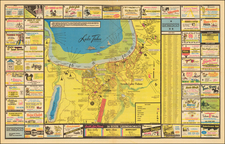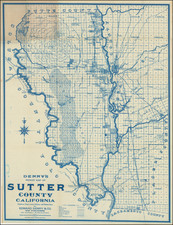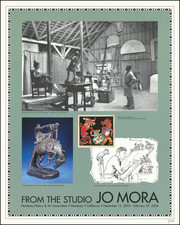Placer County Mining Map -- Ophir Mining Company
This detailed hand-drawn mining claim map, crafted by Edwin Charles Uren, a California Deputy Surveyor, delineates the Ophir Copper Silver and Gold Mining Claim in Placer County, California. The map offers a detailed view of the mining operations, showcasing the various claims, tunnels, and shafts within the Ophir Company’s claim.
Mining in the Ophir area dates back to the beginning of the Gold Rush.
Edwin Charles Uren’s work, reflecting the surveying precision of the late 19th century, provides a window into the intricate layout and operations of one of California’s prominent mining claims. The map outlines several key features, including the claims held by the Ophir Company, Stevens & Morris, and Fred Mallet, among others. It highlights the tunnel systems and the layout of individual mining claims, each distinctly colored to differentiate ownership and operational areas.
The historical context of this map is rooted in the California Gold Rush era, a period that saw a massive influx of prospectors and the establishment of numerous mining claims across the state. Placer County, in particular, was a hotspot for mining activities, and the Ophir claim was among the significant sites for copper, silver, and gold extraction. This map not only serves as a functional document for mining operations but also as a testament to the complex and competitive nature of mining during this period.
The careful detailing of shafts such as the Good Friday Shaft and Green's Shafts, along with the precise measurements and annotations, exemplifies the advanced surveying techniques employed by Uren. His role as a Deputy Surveyor ensured that maps like this were crucial for legal and operational clarity in the bustling mining industry.
Ophir
Ophir, a boomtown of the California Gold Rush, was originally named The Spanish Corral in 1849. The town received its Biblical name, Ophir, in 1850, alluding to the legendary source of King Solomon's treasures, due to the abundant gold placer mining in the area. By 1852, Ophir had become the center of the local gold mining industry and was the most populous town in Placer County, polling 500 votes.
The town's rapid growth saw it flourish with over 500 families by 1853. However, a catastrophic fire on July 12, 1853, devastated the town, destroying it almost entirely. Ophir was not immediately rebuilt after this disaster. Nonetheless, the area later regained prominence as the center of quartz mining in Placer County.
The Ophirville post office operated from 1852 until its closure in 1866, while the Ophir post office opened in 1872 and closed in 1910. Despite the destruction and challenges, Ophir remained an important mining hub, transitioning from gold to quartz mining.
At its peak, Ophir was a vibrant community with 40 saloons, 12 dance halls, five churches, a jail, and a colorful reputation for its wild and tough residents. After experiencing three devastating fires, the town eventually gave up rebuilding efforts and merged with the neighboring town of Newcastle. Today, Ophir is remembered as California Historical Landmark #463, a testament to its once-thriving mining industry and colorful past.
Currently, Ophir consists of a fire station, a school, two businesses, and a cemetery, with an estimated population of 700 residents. The town's legacy as a gold rush boomtown and its subsequent evolution into a quieter community continue to be a point of historical interest and pride.










![[ Southern California to Grand Canyon / Boulder Dam ] Inexpensive Sky Tours via Western Air Express](https://storage.googleapis.com/raremaps/img/small/76820.jpg)

![(Humboldt Atlas and Text) Geographique et Physique du Royaume de Nouvelle-Espagne [with quarto text:] Essai Politique de la Royaume de la Nouvelle-Espagne](https://storage.googleapis.com/raremaps/img/small/99796.jpg)
![[ Alaska / Cabo San Lucas / San Blas / Chile ] Views of Headlands and Islands on the Coasts of North West and South America](https://storage.googleapis.com/raremaps/img/small/88077.jpg)
